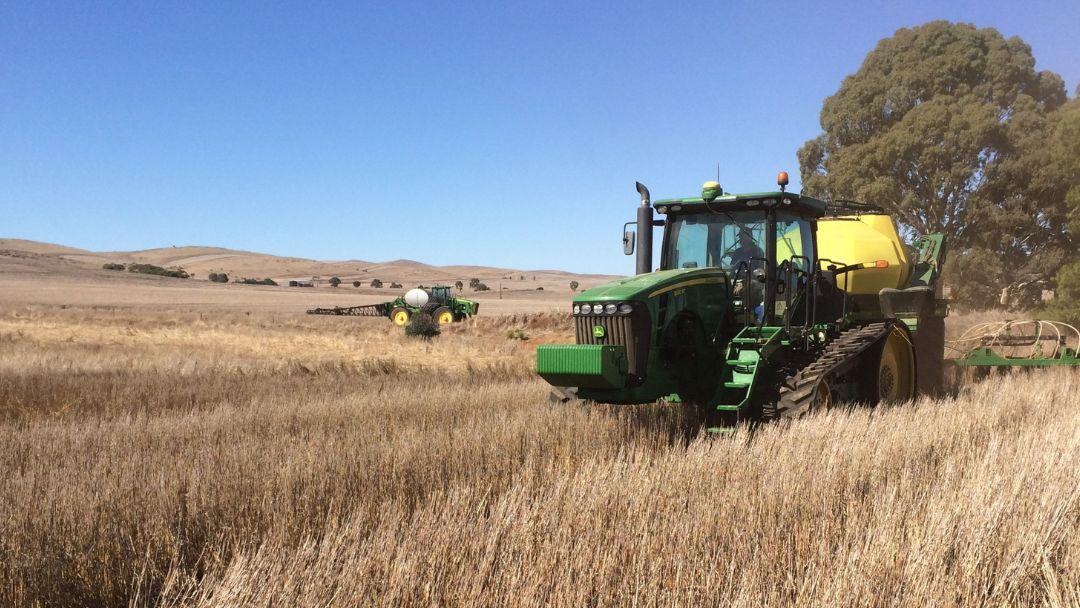IMAGE Courtesy Luke Clark, ACTFA Board Member
This topic was presented by Greg Condon of Grassroots Agronomy, based in Junee, NSW.
Greg is a long-term CTF advocate, widely followed on Twitter, and he also has a significant role in the Australian Herbicide Resistance Initiative. The ’Strip and Disc’ system has been developed over the past 10 years in NSW. It is being used successfully by many growers in that area, and innovative southern and western regions growers are now experimenting with it.
The underlying rationale of ‘Strip and Disc’ is maximum soil cover and minimal soil disturbance, combined with crop selection and sowing to minimise weed pressure. Stripper harvest and disc seeding are the basis of ‘Strip and Disc’, but Greg’s presentation focused on the system as a whole, and outlined the importance of rotation, varieties, row spacing and seeding time. Emphasising this idea, Greg suggested that the stripper front should be the last component to bring into the system, because the success of a stripper front is enhanced by getting all the aspects right first.
Row spacing and uniform seeding are points of particular interest, not only in terms of crop uniformity and weed management, but also yield. Greg noted rules of thumb on row spacing from NSW and WA, based on decades of research and relating yield increase with row spacing reduction – i.e. the average % yield increase expected per centimetre of row spacing reduction.
The effects of high-quality seed placement and firming, and seeding early to optimise water use efficiency and achieve uniform rapid cover, were well illustrated in the presentation. Different soils, moisture and residue levels demand different seeder settings and adjustment, but the value of close attention to these and seeder maintenance was clear. Residue distribution is a critical issue within CTF systems. The effects of limited straw throw can be obvious in seeder blockages when sowing the following crop, but the long-term impacts of consistently poor distribution can have significant effects on crop performance.
System aspects of ‘Strip and Disc’ also show up in stripper performance: good stripper performance depends on building a wall of crop across the front – in turn dependent on uniform crops on narrow row spacing. Most front loss comparisons between stripper and draper harvesting have indicated that front losses are higher for strippers. Greg disagreed, saying that losses from a properly adjusted stripper could often be the same or less than those from a draper front.
Weed management is integral to the ‘Strip and Disc’ system, which fits well with each part of AHRI’s Weedsmart “Big 6” components. In good stripping conditions, such as provided by a uniform crop stand, a low-set stripper front can gather weed seeds efficiently for chaff lining or milling. Weed suppression is also achieved by the shading effect of tall stubble, which can increase fallow efficiency 25-30%.
A stripper front might cost $100,000, but it provides a big increase in header capacity, with a 50% reduction in fuel costs – another point in favour of the system.
Greg also noted the value of ‘stripper schools’ where growers could observe the effect of stripper adjustment. This was a very useful presentation for anyone using, or interested in adopting, the ‘Strip and Disc’ system.
* The 2022 Soils amelioration and CTF conference was a joint activity of ACTFA and WANTFA in August 2022 in Perth. Approximately 150 growers participated, but the topic is of broad interest to growers right across Australia, so ACTFA arranged a quality video recording of conference presentations. Access to these recordings is available free to ACTFA members. It is available to non-members for $50 by following this link.

